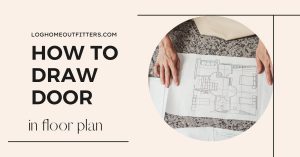As an interior designer, I’ve faced numerous challenges in finding the right balance and harmony in open floor plans.
one of the crucial frequent challenges is choosing the suitable rugs to enrich one another in a manner that creates a cohesive and welcoming area.
By years of expertise, I’ve discovered that deciding on the right rugs for an open flooring plan will be an intimidating job, nevertheless it would not need to be.
With a few simple tips and tricks, you can elevate your space and make it a stunning and functional area.
Let me share with you an instance of a venture I labored on for a consumer who had a spacious open ground plan. The client wanted to create a cohesive and warm atmosphere in their living room, dining room, and kitchen areas.
I recommended pairing a large neutral rug in the living room with a smaller patterned rug in the dining area.
By selecting a neutral rug, it allowed the client to add pops of color and texture with accent pillows and throws. In the kitchen area, we added a runner rug with a complementary pattern to tie everything together.
This design not solely added heat and character to the area but additionally allowed for straightforward transitions from one space to a different.
As an knowledgeable in inside design with a specialization in open flooring plan layouts, I perceive the significance of making a visually interesting and useful area.
Through my years of experience and real-life examples, I’m confident in my ability to provide valuable insights into how to pair rugs in an open floor plan.
How to Pair Rugs in Open Floor Plans Step-By-Step
Step 1: Consider the overall aesthetic of the space
Step one in deciding on the proper rugs in your open flooring plan is to contemplate the general aesthetic of the area.
Are you going for a contemporary look, or do you favor a extra conventional really feel? It’s important to select rugs that complement the existing furniture and decor in your space.
For instance, in case your area has a variety of daring colours and patterns, it’s possible you’ll need to go for a impartial rug to steadiness the area. Alternatively, if your space has a more minimalist design, you may want to add pops of color and texture with patterned rugs.
Step 2: Decide the dimensions of the rugs
The second step in pairing rugs in an open floor plan is to determine the size of the rugs. It’s important to choose rugs that are appropriately sized for each area.
A rug that is too small could make the area really feel disjointed, whereas a rug that is too giant can overwhelm the realm.
As a general rule, you want to ensure that each rug is large enough to anchor the furniture in the space.
For instance, in a front room, you need the rug to be massive sufficient to suit below the entrance legs of the couch and chairs.
Step 3: Choose complementary patterns and colors
The third step in pairing rugs in an open floor plan is to choose complementary patterns and colors. Whereas you don’t need your whole rugs to be equivalent, you additionally don’t desire them to conflict.
A great way to select complementary rugs is to choose a neutral base color and then add pops of color and texture with patterned rugs. For example, if your space has a lot of beige and white, you may want to add a rug with a geometric pattern in a bold color like navy blue.
Real-Life Examples:
Let me share with you some real-life examples of how I’ve paired rugs in open floor plans for my clients.
Example 1:
In a modern open concept living room, I paired a large beige rug with a smaller patterned rug in the dining area. The beige rug allowed for pops of color and texture in the accent pillows and throws, while the patterned rug added visual interest to the dining area.
Example 2:
In a traditional open concept kitchen and dining area, I added a runner rug in a complementary pattern to the existing beige tile flooring. The runner rug added warmth and character to the space while tying everything together.
How do you connect two rugs to an open floor plan?
In terms of connecting rugs, it is necessary to think about the general appear and feel of the area.
1. Choose rugs with similar colors and patterns: If you want to connect two rugs in an open floor plan, it’s a good idea to choose rugs that have similar colors or patterns. This will help tie the two rugs together and create a unified look.
2. Use a rug pad: To keep your rugs from slipping and sliding, make sure to use a rug pad underneath. This will also help to prevent any tripping hazards.
3. Consider the placement of furniture: When connecting two rugs, it’s important to think about the placement of furniture.
Try to position furniture in a way that helps to visually connect the two rugs. For example, you could place a coffee table on both rugs or position a sofa so that it spans both rugs.
4. Create a border: If you have two rugs that are slightly different in size, you can create a border to help connect them.
You could use a solid-colored rug or even a simple patterned rug to create a border around the edges of both rugs.
connecting two rugs in an open floor plan is all about creating a cohesive and visually pleasing design. By choosing rugs with similar colors and patterns, using a rug pad, considering furniture placement, and creating a border, you can successfully connect two rugs and create a beautiful space.
Should a rug match the sofa or walls?
The reply to this query relies on the feel and appear that you simply wish to create in your house.
1. Matching the sofa: If you want to create a cohesive look in your space, you could choose a rug that matches the color of your sofa. This can help tie the room together and create a unified look.
2. Matching the walls: If you have a neutral sofa, you could choose a rug that matches the color of your walls. This can create a calming, harmonious look in your space.
3. Contrasting colors: If you want to add some visual interest to your space, you could choose a rug with a contrasting color to your sofa or walls. This can create a bold, dynamic look in your space.
4. Complementing colors: Another option is to choose a rug with colors that complement the color of your sofa or walls.
For example, when you have a blue couch, you may select a rug with shades of blue and inexperienced.
the key to choosing a rug color is to create a cohesive look in your space. Whether you choose to match the sofa, walls, or create a contrasting or complementary look, make sure that the rug ties the room together and creates a cohesive design.
How many floors should rug show?
In the case of rugs, there isn’t any laborious and quick rule about how a lot of the ground they need to cowl.
1. All furniture on the rug: If you’re using a rug in a living area, a good rule of thumb is to choose a rug that is large enough to accommodate all of the furniture. This means that the front legs of the sofa and chairs should be on the rug.
2. Halfway under furniture: If you have a smaller rug or want to create a layered look, you could choose a rug that is large enough to go halfway under the furniture. This can create a cozy, inviting look in your space.
3. Just the front legs: If you have a smaller rug or want to highlight a beautiful floor, you could choose a rug that just goes under the front legs of the furniture. This can create a visual anchor for the room and show off your flooring.
the amount of floor that your rug should show depends on your personal style and the look that you want to create in your space. Just make sure that the rug is in proportion to the room and doesn’t feel too small or too large.
When deciding on a rug, it is necessary to think about the operate of the world, the scale of the room, and the scale of the furnishings.. By keeping these factors in mind, you can choose a rug that fits your space and creates a beautiful, cohesive design.
If you are looking to buy new rugs for your home here are the best rugs for living room and bedroom and your entire house.
Read Also:
Final Thoughts
In conclusion, I am assured that this step-by-step information on find out how to pair rugs in an open flooring plan will show you how to create a visually interesting and purposeful house.
As an professional in inside design, I perceive the challenges that include choosing the proper rugs to enrich your current decor.
Through years of experience and real-life examples.
I’ve learned that selecting rugs that complement the overall aesthetic of your space, determining the appropriate size, and choosing complementary patterns and colors are crucial in creating a cohesive look.
I hope that this blog has provided valuable insights and actionable tips for homeowners looking to elevate their open floor plan spaces.
So go ahead, confidently choose those rugs, and create a beautiful and inviting space that you’ll be proud to call home.
FAQs
Can I use different patterns in my rug pairing for an open floor plan?
Yes, you can definitely mix and match patterns in your rug pairing for an open floor plan. In fact, layering rugs with different patterns can add visual interest and texture to your space.
Nonetheless, it is necessary to make it possible for the patterns complement one another fairly than conflict.
For example, if you have a geometric patterned rug, you could pair it with a more organic, abstract patterned rug.
How do I choose the right rug size for my open floor plan?
Choosing the proper rug measurement to your open flooring plan will be difficult, however a very good rule of thumb is to go massive. You want your rug to anchor the space and create a cohesive design
so it ought to be massive sufficient to accommodate all the furnishings within the room.
For example, if you have a large sectional sofa, you could choose a rug that is big enough to go underneath it and extend outwards to include other seating areas.
What if I have different flooring materials in my open floor plan?
If you have different flooring materials in your open floor plan, pairing rugs can help create a seamless transition between them. For example:
if you have hardwood flooring in your living area and tile flooring in your kitchen, you could choose rugs that complement each other in color and pattern to tie the spaces together
Alternatively, you could choose rugs that contrast with each other to create a bold, dynamic look.




